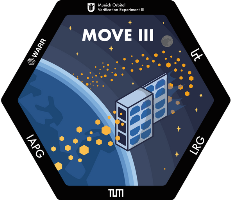| Name | MOVE-III (MOVE-BEYOND) |
|---|---|
| Spacecraft type | CubeSat |
| Units or mass | 6U |
| Status | not launched, expected in 2025 |
| Launcher | RFA One |
| Organization | Technical University of Munich (TUM) |
| Institution | University |
| Entity type | Academic / Education |
| Nation | Germany |
| Oneliner |
Conduct in-situ measurements of submillimeter space debris and micro-meteoroid particles. |
| Description |
It shall conduct in-situ measurements of submillimeter space debris and micro-meteoroid particles, making use of the Debris Density Retrieval and Analysis (DEDRA) sensor. The mission shall help to validate and improve the space debris models and contribute to the characterization of the space environment in low earth orbit. Design, testing and operations shall be carried out as hands-on education for students of the Technical University of Munich under guidance and supervision from the Chair of Astronautics and the Institute for Astronomical and Physical Geodesy. MOVE-III is the first cross-institutional project of the new Faculty of Aerospace and Geodesy at the Technical University of Munich. |
| Sources | [1] [2] [3] [4] [5] |
| Photo sources | [1] |
Last modified: 2025-04-18

